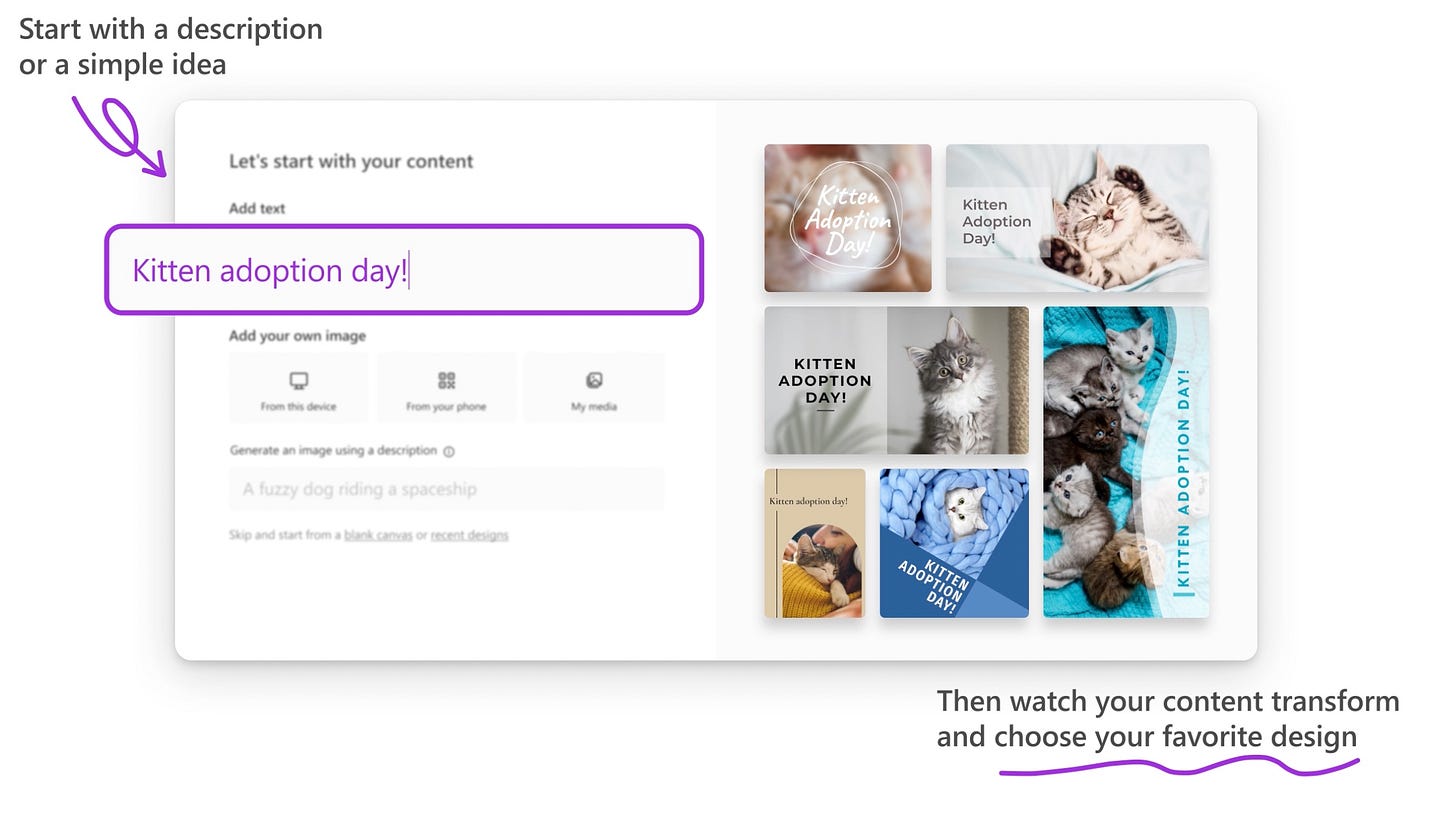DALL-E Image Generation Coming to Microsoft Designer
Text-to-X generators need application front ends
Microsoft announced that DALL-E image generation from OpenAI will be coming to its new Designer product. Let’s unpack this.
First, Microsoft Designer is to be a Canva competitor of sorts. The software is still in beta with restricted access, but it is sold as a fast way to quickly create images for social media and web posts. The user types in a natural language description to state what they want to generate. Designer then pulls from a large stock of images and suggests various layouts.
Alternatively, you can add your own images or text. You can then generate versions that are social media ready in the format and size preferred by the various platforms. Or, you can use your own specifications for a website, banner ads, or other formats.
Enter DALL-E
Microsoft’s announcement this week is that OpenAI’s DALL-E image generation will be part of the solution. That will enable creatives to generate novel images and layouts that do not resemble other images and can be customized beyond what Microsoft has in stock.
In case you missed it, Microsoft already paid OpenAI $1 billion in 2020 to get exclusive rights to GPT-3. The parameters and duration of the exclusivity are not clear, but Microsoft has already employed the text-to-code generator in its Github Co-pilot solution. Independent developers shared with Voicebot.ai that the solution makes many software development tasks 3-5 times faster. Keep in mind Microsoft wanted OpenAI to use Azure for its cloud services. This agreement was not based solely on the expected use of Co-pilot.
It is also unclear whether DALL-E was part of the original deal or it was added more recently. The GPT-3 deal predated the debut of DALL-E by more than a year, so it seems likely that its addition is an extension of the 2020 agreement.
Enter Ease-of-Use
Integrating DALL-E into a tool such as Microsoft Designer is an essential evolutionary step for any Text-to-X solution. As fast as the text-to-image and related categories are growing, they are not really set up for mass adoption. It is the business and consumer applications built on top of these AI-based generative solutions that will bring them to really large markets. The interfaces from the technology providers vary widely and have esoteric qualities that make them unsuitable for less adventurous users.
It is a fair question to ask whether a new Microsoft solution will be the application that takes DALL-E mainstream. Adding it to Adobe Photoshop would immediately expose the image generator to millions of users. Designer must first be adopted by new users before they even encounter the DALL-E features. With that said, this seems like a necessary step, and I expect many more to follow in Microsoft’s footsteps.






